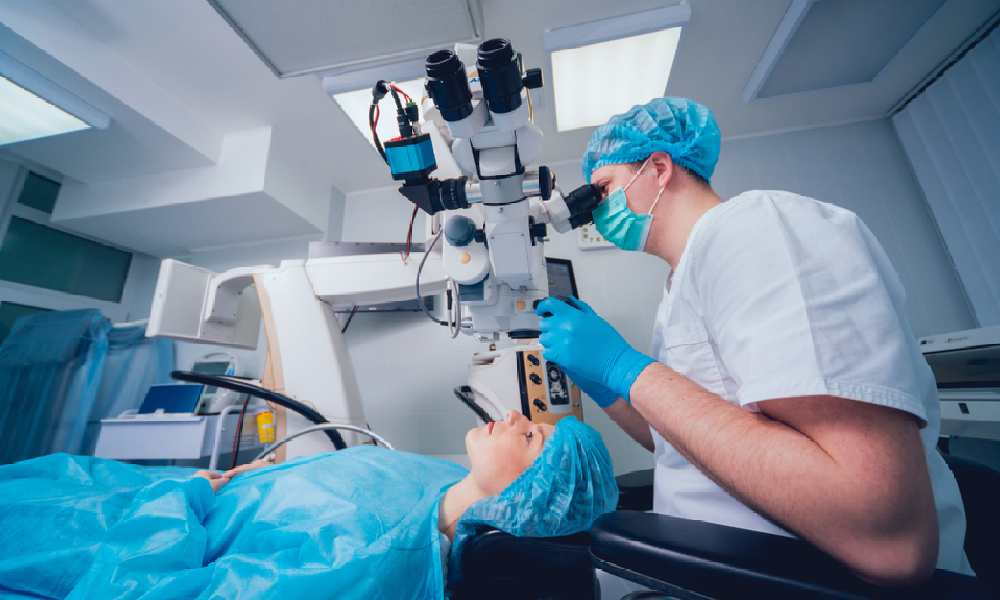A type of laser eye surgery called LASIK, also known as “laser-assisted in situ keratomileuses,” is used to treat a variety of vision issues. Nearsightedness, farsightedness, astigmatism, or presbyopia are common moderate degrees of refractive error among candidates for LASIK surgery. Similar to other laser eye surgery procedures, the LASIK Miami procedure reshapes the cornea of the eye, enabling light to enter the eye and focus on the retina without the need for glasses or contact lenses.
An ophthalmologist from Kraff Eye Institute will conduct LASIK in a brief procedure in a specialized clinic or eye center. Although there are obvious hazards with any operation, LASIK is widely used and has a high percentage of success. The cornea, a translucent dome-shaped tissue located in the front of the eye, can be precisely reshaped during LASIK surgery to enhance vision.
Why is it carried out?
LASIK is an option for the majority of people who wear glasses or contacts to see. With variable degrees of correction for each, LASIK can treat astigmatism, nearsightedness, and farsightedness.
- Nearsightedness: If your eyeball gets a little bit longer than normal or when the cornea curves very sharply, light rays concentrate before the retina and reduce your ability to see distant objects. Nearby objects can be seen reasonably well, but far away objects cannot.
- Farsightedness: Farsightedness results from an abnormally short eyeball or an excessively flat cornea, which causes light to focus behind the retina rather than on it. Close-up and occasionally distant vision becomes foggy as a result.
- Astigmatism: Astigmatism affects both near and far vision by causing the cornea to bend or flatten unevenly.
Different types of LASIK surgery
- IntraLASIK
With IntraLASIK, the corneal flap is created using a femtosecond laser rather than a microkeratome. One quadrillionth of a second is the pulse width of the femtosecond laser beam. This treatment offers patients a safer computer-controlled alternative for creating the corneal flap because it gives the surgeon greater precision and accuracy.
Many individuals who were previously deemed unfit due to their thin corneas can now undergo intraLASIK surgery. Doctors can perform IntraLASIK on patients with thinner or flatter corneas because the femtosecond laser can generate thinner, more precise cuts in the corneal flap.
- Custom LASIK
A laser vision correction procedure called custom lasik surgery makes adjustments to your care based on your unique visual characteristics. Custom LASIK gives more accurate information about your optical needs because to wavefront technology. The path taken by light through your eye is compared to the path taken by light through an eye with perfect vision using a wavefront analyzer.
Lower-order aberrations, also referred to as refractive errors, include farsightedness, nearsightedness, and astigmatism. Traditional LASIK procedures are used to address lower-order aberrations. Higher-order aberrations, which deviate from refractive errors, cause visual problems include glare, poor night vision, halos, and low contrast sensitivity. By using personalized LASIK, these higher-order aberrations can be fixed.

 Utilizing 3d printing technology in medical training
Utilizing 3d printing technology in medical training  Online THC A Flowers: Best Options Available
Online THC A Flowers: Best Options Available  Entails of terpenes in Delta 8 gummies
Entails of terpenes in Delta 8 gummies  Why are regular check-ups with a thyroid health specialist important?
Why are regular check-ups with a thyroid health specialist important?  Pain Down There? You Are Not Alone! Understanding Chronic Pelvic Pain
Pain Down There? You Are Not Alone! Understanding Chronic Pelvic Pain  What Allied Health Services are Available in Werribee for NDIS Participants?
What Allied Health Services are Available in Werribee for NDIS Participants?  What to Expect When Visiting a Pain Center for the First Time?
What to Expect When Visiting a Pain Center for the First Time?  Health benefits of using the best magic mushroom gummies
Health benefits of using the best magic mushroom gummies  Addiction is a complex and devastating disease.
Addiction is a complex and devastating disease. 
